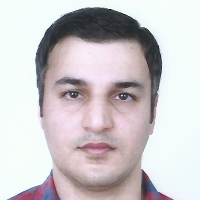Analysis of Resilience Indicators in Urban Blocks with Passive Defense Approach (Case Study: Tehran Metropolis)
Today, reducing the risk of natural and man-made disasters by using passive defenses and increasing the resilience of cities have become the goals of many cities. With the synergy between the two concepts of urban resilience and passive urban defense, cities are strengthened to a large extent against man-made and natural crises. The aim of the current research is to analyze the resilience indicators in the blocks of the Tehran metropolis according to the passive defense approach. The current research is applied in terms of purpose and descriptive-analytical in nature. The collection of information for the extraction of indicators has been done with the library and documentary methods. Then the layers related to 92 urban resilience indicators with a passive defense approach were collected using Tehran Municipality data, Open Street Map website, Google Earth website, and statistical blocks of the Tehran metropolis in 2015 and pre-processed and prepared in Arc GIS software. The IHWP model was used in Arc GIS software to analyze the indicators. The indicators rating questionnaire in the IHWP model process has been completed by 25 experts. The results of the IHWP model have shown that 9.62% of the total area of the Tehran metropolis has very low resilience, 17.09% has low resilience, 27.24% has medium resilience, 30.46% has high resilience and 15.58% has very high resilience. The inner and central parts of Tehran have a higher level of resilience and the outer and peripheral parts, especially in the west and east of the metropolis, have a lower level of resilience. Finally, solutions for improving urban resilience with a passive defense approach in the Tehran metropolis have been presented.
-
Spatial Planning and Redistribution of Tourism and Police Centers to Reduce Crimes in the Coastal Strip of Mazandaran Province
*, Seyed Khalil Seyedalipour, Mohamadali Adish
Journal of Mazandaran Police science, -
Spatio-temporal monitoring of the dust phenomenon in southwestern Iran with an emphasis on the surface water changes
*, Kazem Borhani, Shahin Jafari
Journal of Remote Sensing and GIS Applications in Environmental Sciences, -
Evaluation of the changes in water areas of the Tigris and Euphrates basin based on time series analysis of various environmental factors
*, Kazem Borhani, Shahin Jafari
Physical Geography Research Quarterly, -
Identify the components affecting the happy city (Case Study: Babol City)
*, Mohsen Ahadnejad Reveshty, Abolfazl Meshkini
Social Development & Welfare Planing,



